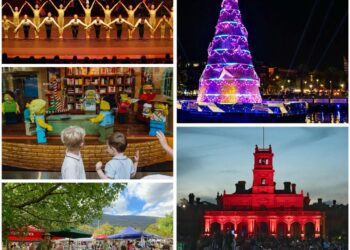Dr. Himanshu Talwar

From the serene monasteries of Ladakh to Varanasi’s sacred ghats, spirituality is deeply woven into India’s cultural fabric, with each site telling a story of devotion and awakening. The Maha Kumbh Mela stands as a powerful testament to this deep-rooted faith. Held every twelve years, it is the world’s largest spiritual gathering, attracting ascetics, pilgrims, and curious travellers from across the globe.

As spiritual travel gains momentum in today’s fast-paced world, the Maha Kumbh offers an unmatched gateway to self-discovery. It takes place at four sacred riverbanks—Prayagraj, Haridwar, Ujjain, and Nashik—and is considered a cosmic confluence dictated by planetary alignments. The Prayagraj edition, held at the Sangam where the Ganga, Yamuna, and Saraswati meet, is the most significant. The event is marked by ritualistic bathing, sacred teachings, and the presence of Naga Sadhus—ascetics who renounce worldly life in pursuit of enlightenment.

For many, the Maha Kumbh is a life-changing pilgrimage. Bathing in the sacred rivers during the Mela is believed to cleanse past karma and offer spiritual liberation. Whether devout believers or seekers of wisdom, the collective energy of millions fosters a profound sense of spiritual awakening. Beyond religious connotations, the festival offers an immersive cultural experience. Spiritual discourses, meditation sessions, and witnessing ancient rituals allow travellers to connect with India’s mystical heritage. Many also venture to ashrams, temple towns, and yoga retreats to complement their Maha Kumbh journey.
Modern travellers are increasingly seeking experiences that nurture the soul. Spiritual travel, as it has come to be known, is not about ticking off landmarks or following conventional tourism routes. It’s about seeking a profound connection to the soul and the universe, whether through meditation, reflection, or immersion in sacred rituals. This aligns with a global shift towards mindfulness and well-being. The Maha Kumbh, with its promise of purification and renewal, has become a central point for those in search of inner peace. It offers a chance to witness and partake in rituals that have remained unchanged for centuries, taking visitors beyond the physical realm.
The Maha Kumbh also attracts Western travellers, drawn to India’s ancient spiritual practices. For them, the Mela serves as an entry point into these traditions, blending ancient practices with modern sensibilities to create a profound experience for all. Experiencing the Maha Kumbh requires careful planning. Accommodation options range from luxury tents to ashrams, each offering different levels of immersion. Guided tours provide historical insights, while responsible travel ensures respect for the sacred environment. For those committed to deepening their spiritual journey, participating in meditation camps, engaging with learned gurus, and spending time in solitude by the riverbanks can elevate the experience. The chants of hymns, the scent of incense, and the mesmerizing sight of saffron-clad sadhus combine to create an atmosphere of divine transcendence. For spiritual travellers, this immersion into an ancient way of life becomes a deeply personal and transformative journey, making the Maha Kumbh Mela a truly enlightening experience.
Follow BOTT on LinkedIn, Facebook, Twitter & Instagram
Subscribe BOTT Channels on WhatsApp & Telegram to receive real time updates



































